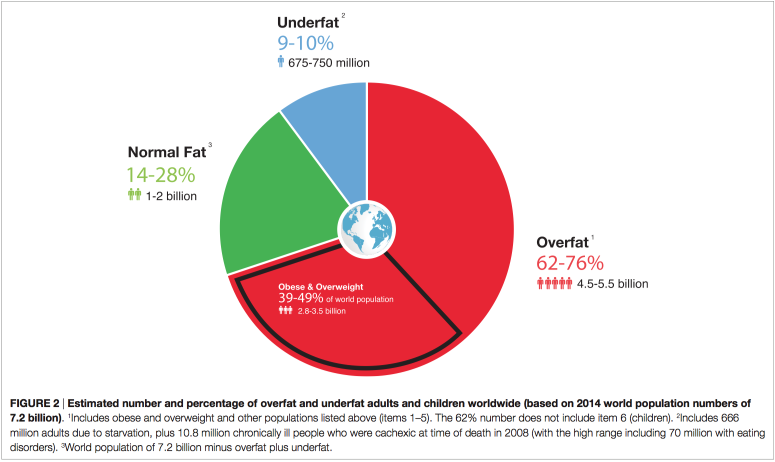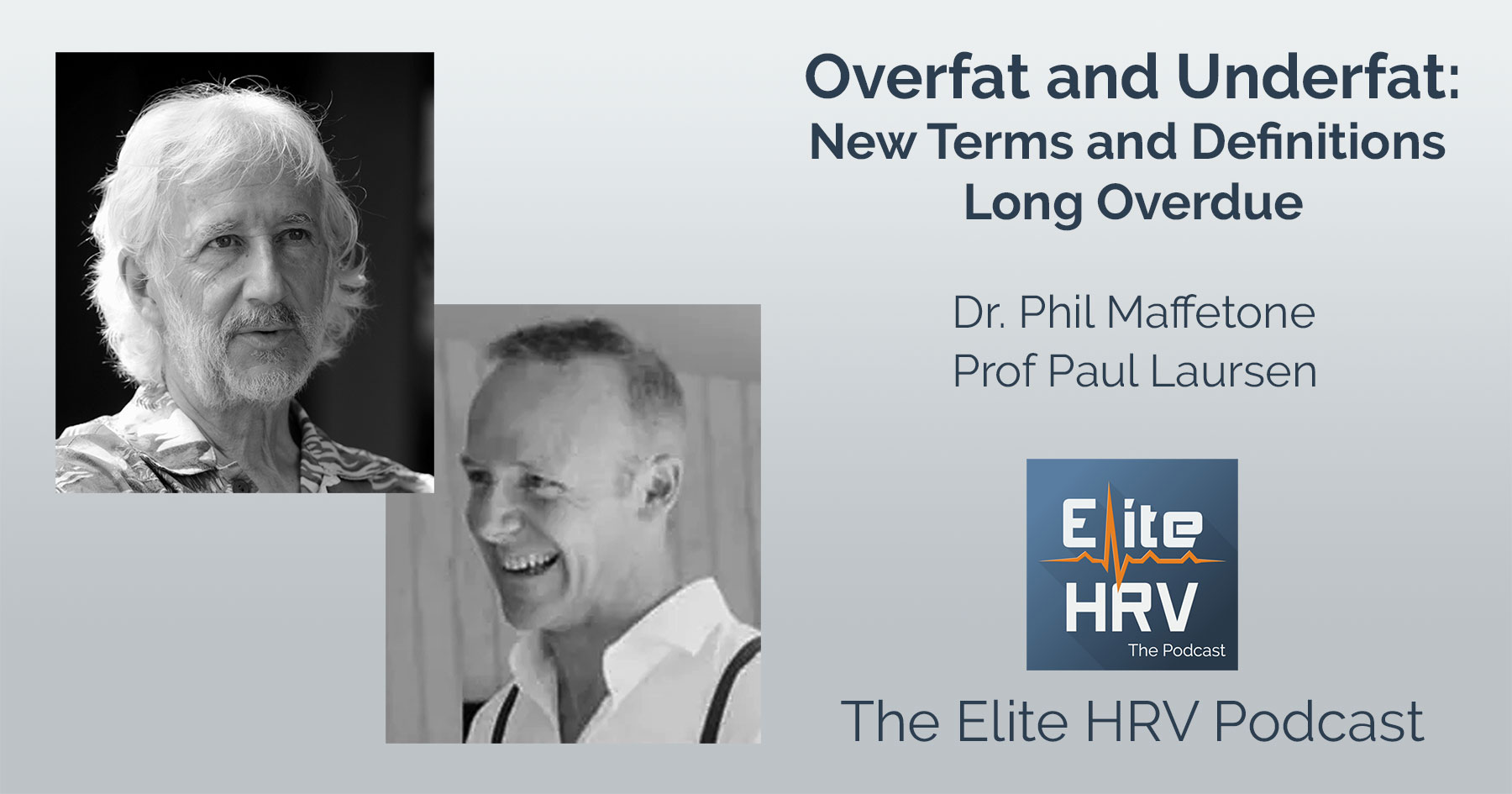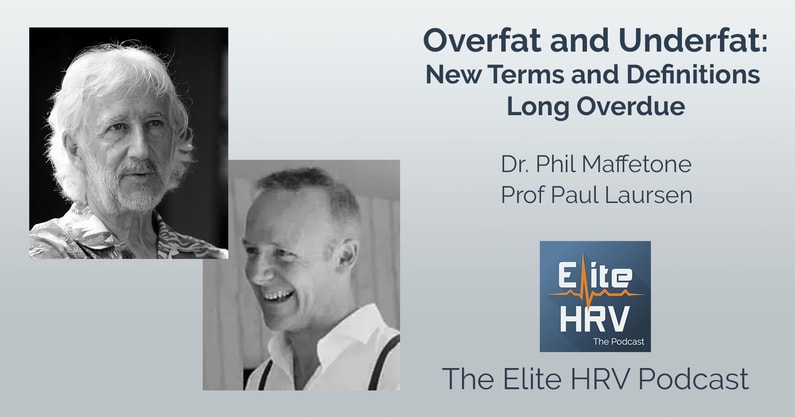In This Episode
First coverage with Dr. Phil Maffetone and Professor Paul Laursen on their newly published and controversial scientific paper titled: “Overfat and Underfat: New Terms and Definitions Long Overdue.” We discuss the pandemic of people who are “overfat” — defined as having sufficient excess body fat to impair health and how this classification differs from “overweight”. If we’re to truly address the problem, we need to start using the right terminology and not hiding behind propriety (in certain situations). Doctors, researchers and individuals all need to arm themselves to take control of what some are now calling the “world health crisis”.
TOPICS:
- 4:48 – What is “overfat” and how is it different from “overweight”?
- 6:03 – What is “underfat” and how is it different from “underweight”?
- 6:23 – Why body fat should be considered an an endocrine (hormone-related) organ
- 8:33 – Commercial pressures that influence our use of the term “overweight” vs “overfat”
- 12:16 – Is calling a someone “overfat” insulting? Can someone be over fat and healthy?
- 13:33 – Marketing agendas behind the term “over weight”
- 14:53 – Are we being overly sensitive about body fat? Considerations of terminology:
- 16:03 – Global pandemic: Over 62% of the world is now considered over fat
- 18:53 – Fat is not just about looks, it’s about chronic disease and healthcare
- 19:53 – Body fat increases cause increases in inflammation, heart disease, cancer and more
- 22:33 – Why it’s so important to use the right terms when talking about body fat and health
- 24:18 – Which main diseases are correlated with or caused by with overfatness?
- 24:58 – The lifestyle component of chronic disease. Is it reversible?
- 27:33 – Can you be thin yet over fat? What is sarcopenic obesity?
- 30:23 – How fat can hide within the body and how to find it
- 31:03 – The dangers of abdominal fat compared to other body fat
- 32:08 – Fat as a precursor of chronic disease
- 33:23 – The role of refined carbohydrates and insulin in fat accumulation
- 35:19 – Burning fat calories vs sugar calories and the role of exercise
- 36:39 – Epigenetics and what you can do when getting healthy becomes overwhelming
- 38:39 – How to not freak out in tackling fat loss
- 41:34 – The importance of awareness and incremental change in fat loss
- 43:39 – The role of the brain in managing stress and body fat
- 44:59 – Adipose tissue could be an endocrine organ itself, what does that mean?
- 45:49 – The role of the HPA axis in fat accumulation and fat loss
- 47:55 – Why BMI isn’t useful and which body fat measurements ARE useful
- 48:53 – Why precise clinical measurements of body fat aren’t always necessary or even useful
- 57:09 – Why clinicians and researchers need to get their terminology right when it comes to body fat
- 59:19 – Don’t measure your waist circumference every day
- 60:39 – About DXA scans – dual-energy x-ray absorptiometry, how its used, where to find it
- 62:14 – The importance of before and after measurements
- 62:59 – How BMI (body mass index) can get us in trouble when assessing health risk
- 1:05:05 – Is under fatness really a prevalent issue? The prevalence of eating disorders
- 1:08:49 – Increases in “exercise” and corresponding underfatness, are you taking fat loss too far?
- 1:09:49 – The psychology behind cortisol dysregulation
- 1:10:39 – Why type A individuals get stuck in a loop of chronic exercise, cortisol dysregulation and receptor down regulation
- 1:14:04 – The intangible benefits of obstacle racing and outdoor sports as opposed to exercising in a gym
- 1:15:04 – A simple way people can begin to take charge of their own health
- 1:16:29 – Why drug companies advertise on TV and how you, as a doctor, can do the same thing
- 1:17:29 – The importance of gathering useful and meaningful data, not just any data
- 1:19:09 – Terminology: When to (and when not to) tell people they are over fat
- 1:20:24 – Reliable and simple methods of measuring body fat
- 1:21:09 – Where to find the open access paper on the Overfat Pandemic

Chart from “Overfat and underfat: New terms and definitions long overdue” publication showing the population percentages classified as overfat (vs. obese/overweight), normal fat, and underfat.



 Dr. Phil Maffetone
Dr. Phil Maffetone



